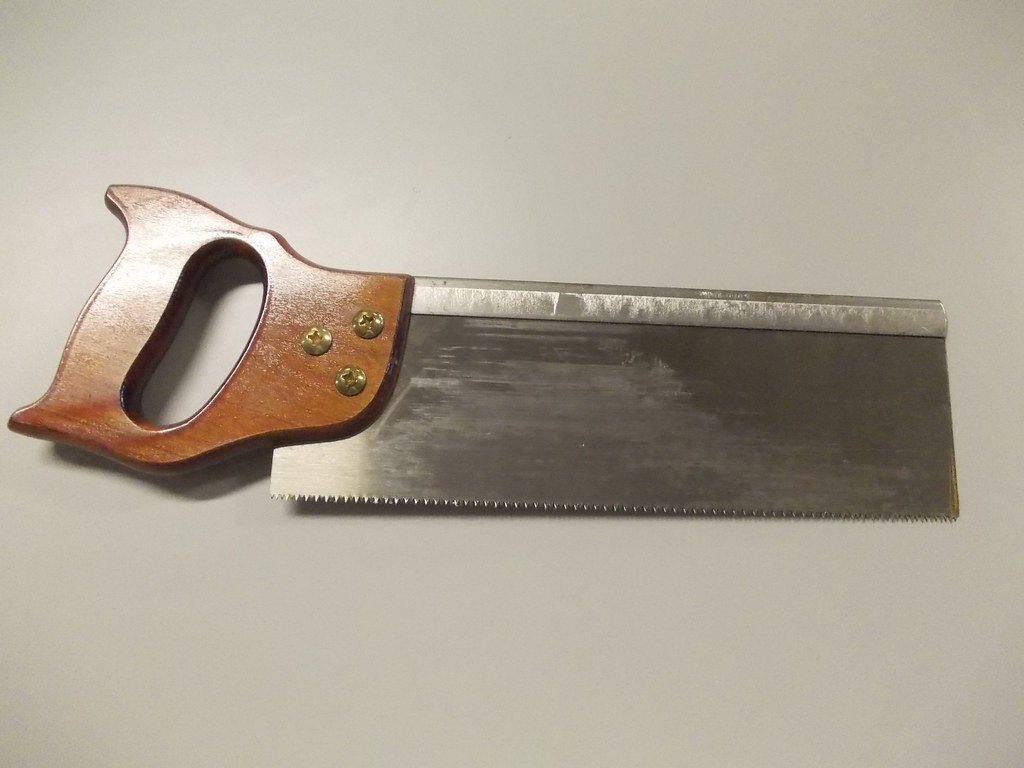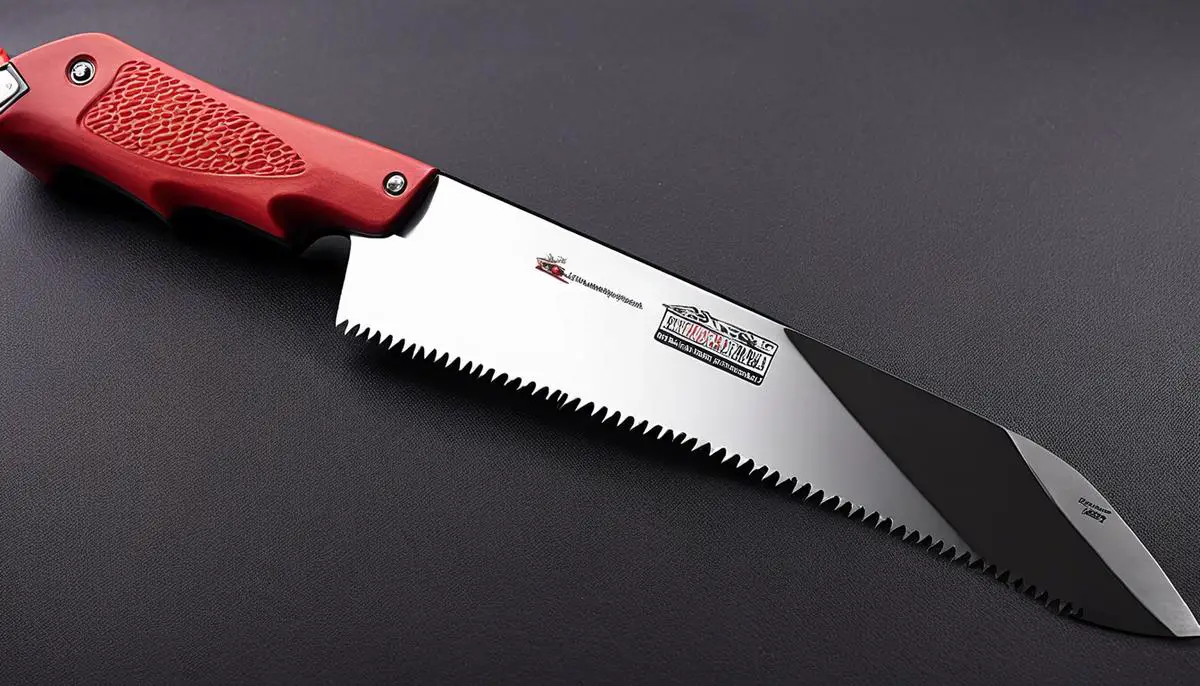When it comes to woodworking, mastery of even the most basic skills can make a world of difference in the quality and accuracy of your projects.
One such fundamental aspect is sawing a straight line by hand. It might sound simple but it’s surprising how many people struggle to achieve this with precision and consistency.
This document will serve as your comprehensive guide in this quest for perfection. The contents will cover the essentials of selecting the right tools, understanding their roles, and applying the right technique to ensure that your cuts are straight every time.
Moreover, you will learn about the importance of accurate measurements and how to effectively use a square and a straight edge to establish a guideline for sawing.
Understanding the Right Tools
The Essential Toolkit for Sawing Straight: A Hobbyist’s Guide
Do you long to create crisp, straight saw cuts every time? You’re not alone. Sawing straight lines is a skill highly coveted among woodworking hobbyists, and it often defines the difference between a piece that exudes effortless perfection and one that speaks a different story.
However, it isn’t necessarily about having a steady hand, but more about having the right tools and knowing how to utilize them effectively.
First and foremost, let’s talk saws. The type of saw you employ matters significantly. For fine woodworking tasks, a dovetail saw or tenon saw can be indispensable.
The dovetail saw, with its finely toothed, thin blade, gives unparalleled control for precise cuts, while the tenon saw’s rigid back ensures straight lines. For larger projects, the circular saw emerges as a clear favorite due to its versatility and power.
Proper guiding tools can be game-changers for precision sawing. A straight edge clamp or a saw guide is vital for maintaining straight-line cuts, especially when handling large materials.
These guides clamp onto the workpiece, providing a definitive guide for your saw to follow, minimizing room for error.
Speed squares, objects of simple geometry and aesthetic simplicity, serve as versatile tools for marking and guiding straight lines.
They provide an accurate 90-degree angle, making them an invaluable asset to any straight-line sawing mission.
Setting squares present an age old solution for measuring and marking perfect angles and straight lines.
A beautifully crafted brass setting square is not only a testimony to the love for the craft but also a precise measuring tool.
A marking knife or a carpenters pencil, for etching your guide lines, can’t be overlooked. With a sharp marking knife, a fine line can be drawn, providing precision which a normal pencil fails to offer.
For larger projects where visibility is key, a carpenter’s pencil does the job effectively without leaving deep scribe lines that can often mar your work.
In the grand scheme of sawing straight lines, it’s not just the saw that does the heavy lifting. It’s an orchestra of finely crafted tools, all working together to achieve the common goal; the perfect cut.
Ever noticed how a violin alone can never match the splendor of a symphony? Woodworking echoes the same sentiment.
The dovetail saw plays its melody of precision. The saw guide keeps the tempo steady. The setting square punctuates the rhythm, and the marking knife finales the masterpiece with a precise scribe line.
In conclusion, a straight sawing cut is an art, a manifestation of dedication, precision, and the right set of tools.
So, set your workshop with these essential items and let your woodworking journey reflect your passion for craftsmanship that truly hits the mark.
Who knows? The next straight line you saw might just be the beginning of a true masterpiece in the making.

Proper Sawing Technique
Advancing Your Hand Sawing Technique: Secrets to Superior Woodworking
Cutting the straight line with a hand saw is truly the heart of woodworking, playing a pivotal role in shaping your final masterpiece.
You’ve already grasped the basics: the toolkit essentials, from the dovetail saw to the tenon and circular saw; the role of guiding tools, such as a straight edge clamp and a saw guide, and the importance of marking tools such as the marking knife and carpenter’s pencil.
Now, let’s dive deeper into intricacies and brush up your hand sawing skills a notch higher.
- Master the Deviation Correction Technique: Despite marking accurately, drifting from the correct path is not uncommon while sawing. But worry not, the solution is simpler than you think. Pause your sawing and slightly adjust the angle of your saw towards the line and resume. Over time, these micro-adjustments will be second nature to you!
- Control Equals Quality: Focus on controlling the saw speed and pressure. During the initial strokes, apply less pressure to establish a good kerf that’ll guide subsequent cuts. As your confidence multiplies, mirror this with an increase in your stroke rate.
- The Finger Thumb Guide: Sawing off the mark can be a bummer, but the finger-thumb guide method is a great trick to eliminate that. Simply hold the wood with your thumb and middle finger at the line where you’ll be sawing, then rest the saw’s blade against your thumb. Make the first few strokes slow and steady to establish your line.
- Mirror Your Stride: Your body stance impacts the precision of any cut. Stand or sit squarely to your work, ensuring a good balance, with your movement in sync with your saw, creating a rhythm. This harmonizes your whole body motion, consequently improving your sawing precision.
- Regular Saw Maintenance: Ensure your hand saw is in top-notch condition! A dull saw blade is a struggle to work with, offering reduced control and precision. Routinely clean, sharpen, and adjust your saw teeth for optimal performance.
- Practice Is The Key: As in any skill, practice is pivotal in perfecting the hand saw technique. Start with small, easy projects and work your way up to complex designs. Regularly challenge and stretch your skills for consistent improvement and growth.
- Patience, the Underrated Virtue: Any craftsman develops their skill over time. Sawing a straight line is no different. Take your time, avoid haste, and learn deliberately. With patience and steady practice, the results will bloom in due time.
Fine-tuning your hand sawing technique is an exciting journey. By honing these additional skills, you’ll not only better your craftsmanship but also find more joy and fulfillment in each project.
Keep learning, keep experimenting, and let your hobby nurture your woodworking brilliance!

Guidelines and Measurements
Accurate guidelines when sawing a straight line are not just essential, they’re vital for success in any woodworking project.
It’s akin to having GPS on a long journey. Without these guidelines, it’s easy to stray from the desired path and compromise the finish of a woodworking project.
After the selection of the correct saw for the task and engraving the guide line, the movement of the saw needs to be optimized for accurate cutting.
Here introduces an essential concept: the deviation correction technique. Just like how a car might veer slightly off course on the highway, a saw might deviate from the straight line.
By observing the saw blade’s relationship with the guide line, one can take corrective action and nudge the saw back onto the marked path.
Beyond saw movement, attention must be paid to the saw’s speed and pressure. No two pieces of wood are the same.
Thus, understanding how the saw behaves through different woods will prevent jagged edges and wood splits.
Consistent speed and monitored pressure are crucial to achieve a smooth finish, avoid blade jumping and prolong the lifespan of your saw.
Speaking of control, who knew the humble finger and thumb could be crucial to your sawing accuracy?
Simply resting the thumb against the blade edge while the finger guides the top can effectively maintain the saw on the correct path.
This finger-thumb guide technique ensures the right quantity of pressure and accuracy in direction.
Consider, too, the stance of the body. Imagine sawing as a dance; the body and the tool are partners; both have roles and both need to be in sync to deliver the best performance.
A straight, comfortable and balanced stance allows for better control and precision, aids in minimizing fatigue, and enhances safety.
To ensure your tools give their best performance, regular maintenance of your hand saw is critical. Keep it sharp, oiled, and rust-free.
A properly maintained saw not only improves the quality of straight line sawing but also increases the tool’s lifespan – a win-win scenario!
Practice is also a critical component of mastering straight line sawing. Time spent understanding this vital part of woodworking is an investment that will surely pay off, improving your skills and efficiency over time.
Lastly, but most importantly, patience is key in woodworking. One cannot rush precision. Indulge in the process, relish the learning, and remember: Good things take time.
So take a deep breath, steady your hands, follow the guidelines, and let the saw do its magic.
Woodworking is more than a hobby, it’s a journey, and every journey needs a roadmap. In woodworking, those are our accurate guidelines.

By putting into practice the insights shared in this guide, you will be well on your way to mastering the craft of sawing straight lines by hand.
This is a crucial skill that applies to almost any woodworking task you can imagine. Remember that getting the right tools is the first step, but knowing how to use them properly is just as important.
Patience and practice are key, and you will soon find that letting the saw do the work is not only the right way to saw, it’s actually easier.
Discipline in maintaining the proper stance and grip, ensuring accurate measurements, and following a neat, marked guideline will eventually lead you to the accomplishment of neat, straight cuts.
Sawing a straight line by hand is an art and every skilled craftsman knows that it’s these foundational skills that form the bedrock of all great woodworking projects.

